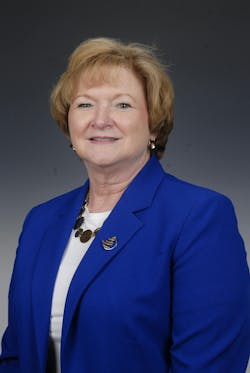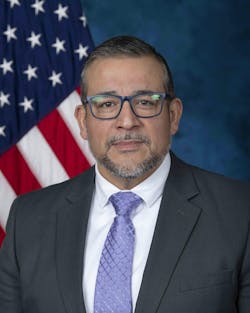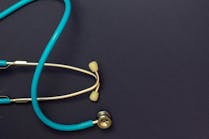Setting the Latest Standards in Room Cleaning and Disinfection
The importance of cleaning and disinfection of contaminated surfaces in patient care areas is evidenced by the many stakeholders involved in these practices.
This includes the environmental services (EVS) professionals performing the tasks, the infection prevention (IP) practitioners collaborating with EVS leaders and teams, and both EVS and IP engaging with specialty department leaders and their teams to address unique sanitation aspects of their environments. All are guided by associations and agencies that publish evidence-based standards for keeping patients safe.
HPN reached out to the Association for the Health Care Environment (AHE), the Association for Professionals in Infection Control and Epidemiology (APIC), the Association of periOperative Registered Nurses (AORN), the American Association of Critical-Care Nurses (AACN), and the American Society for Healthcare Engineering (ASHE) to learn the latest trends in room cleaning and disinfection.
We report on their news and insights for maintaining healthy environments in care delivery settings, with specific considerations for perioperative and critical care spaces.
TJC updates infection prevention and control standards
The Joint Commission (TJC) approved new and revised requirements for infection prevention and control (IC) standards, effective July 1, 2024, that are “driven by a standardized approach that simplifies the requirements and eliminates those not providing value to healthcare facilities,” as reported by the AHE.1
In June 2024, Jonathan Flannery, MHSA, CHFM, FASHE, FACHE, senior associate director, Regulatory Affairs, ASHE, presented an Association for the Health Care Environment (AHE) on-demand webinar on the TJC’s updated requirements, pointing out what is new, what is different, and what changes will likely have the greatest impact on EVS teams.2 ASHE and AHE are professional membership groups of the American Hospital Association (AHA). Flannery offered his insights on the requirements to HPN for this article.
“Even though there are changes, there is really not significant change within the new standards and requirements,” said Flannery. He explained some of the subtle differences, that while on the surface do not appear substantial, will have an impact on EVS and IP professionals moving forward.
For example, while healthcare facilities have been required by TJC to have in place written policies and procedures (P&P) for infection prevention and control, they now must specifically cite the relevant laws, regulations, guidelines, expert opinions, and other sources on which the P&Ps are based. It comes down to not just stating what measures a facility will take to prevent infections but also why they have chosen them.
“In my opinion, EVS professionals need to be the driving force behind improving those policies and procedures to make sure they're meeting the proper regulations and guidelines, laws, and requirements,” said Flannery.
With regards to the TJC’s new protocols for highly contagious infectious disease (HCID) or special pathogens, Flannery also stressed the importance of EVS engagement. He noted how during the U.S. Ebola outbreak in 2014, the role of EVS was overlooked in some facilities, particularly those without strong EVS leadership.
“Because TJC’s new HCID protocols require IPs to conduct an organization-wide assessment, EVS professionals must be communicated with and trained properly on dealing with these issues,” noted Flannery. “EVS is part of the team of caregivers because they perform tasks critical to protecting patients and supporting their healing.”
When asked what EVS leaders should take away from the TJC’s new and revised requirements, Flannery stated:
“The key takeaway here is that your current programs are still valid but will require some expanding. It’s a perfect opportunity for organizations to go back and do a thorough review of their programs. Work this into your annual program evaluation, going step by step to identify improvements to your cleaning and disinfection practices, which ultimately impacts the bottom line - keeping patients safe and free from infection.”
Critical care perspectives on TJC requirements
Wendy Simpson, MSN, RN, CCRN, FCCS, Infection Prevention, Lt. Col. Luke Weathers, Jr. VA Medical Center, commented on the critical care implications of the new and revised TJC requirements. She highlighted IC.07.01.01, a new standard that addresses preparedness for high-consequence infectious diseases or pathogens, stating:
“This standard was inspired by the recent outbreaks of Ebola and COVID-19. Though the standards leave decisions related to frequency and levels of disinfection up to the individual facilities, each facility should have a robust cleaning program in place, particularly in our ICUs.”3
Perioperative perspectives on TJC requirements
Karen deKay, MSN, RN, CNOR, CIC, FAPIC, senior perioperative practice specialist, AORN, offered her insights on how the new and revised TJC requirements impact cleaning and disinfection practices in the perioperative environment.
“The new and revised Joint Commission infection prevention and control standards are more streamlined and focus on the structures and processes that support a strong infection prevention and control program,” said deKay. “The reason for this restructuring is because infection prevention is not just about individual practices, but instead the overall framework in which infection prevention occurs.”
deKay highlighted these three elements of performance (EP) from TJC’s requirements that are particularly important to the perioperative space:3
IC.04.01.01 EP 2 recommends that hospitals foster a multi-disciplinary approach to infection prevention and control. “Communication and collaboration among various departments including infection prevention, nursing units, sterile processing, perioperative personnel, and environmental services are key,” deKay explained. “Personnel from perioperative services may be asked to serve on a multi-disciplinary team to discuss challenges, share insights, and implement best practices.”
IC 04.01.01 EP 4 clearly identifies key elements for cleaning, disinfecting, and sterilizing medical equipment and surgical instruments that should be included in a hospital’s policies and procedures. “As surgical instrumentation, as well as a variety of noncritical devices and equipment, are utilized in every surgical procedure, perioperative personnel should review these elements carefully,” said deKay.
“Some elements include following manufacturer’s instructions for use (IFU), using U.S. Environmental Protection Agency (EPA) registered disinfectants and U.S. Food and Drug Administration (FDA) approved liquid chemical sterilants, developing criteria for immediate-use steam sterilization, and documentation of device reprocessing cycles,” she added.
IC.07.01.01 EP 1 states facilities should have a protocol in place for recognizing, responding, and containing potential high-consequence infectious diseases or special pathogen outbreaks. “This is important for perioperative personnel because surgery for a patient with a confirmed or suspected infection with one of these pathogens may be necessary,” deKay commented.
“Protocols should include not only room preparation and PPE, but also how cleaning and disinfecting of the patient care area, surfaces, and equipment, as well as handling of waste and linen will occur,” she continued. “Education and training on the new protocols should be developed for all personnel, along with demonstration of those skills and tasks specific to their roles (e.g., cleaning operating rooms, sterilizing instruments).”
The importance of collaboration
As TJC’s requirements demonstrate, collaboration among EVS, IP, perioperative, and critical care teams (and other clinical department teams as well) is critical in room cleaning and disinfection efforts.
“EVS is a profession and it’s a very important profession,” said Marci Butts, director of Environmental Services, West Hospital, Mercy Health, Cincinnati. “That’s why we must have a seat at the table and a strong connection and relationship with our IPs and other teams responsible for patient care and safety. None of us can be on an island. We must work together and all be speaking the same language.”
Janet Flynn Mulroy, DNP, ACNP, CCNS, CCRN, Acute Care Nurse Practitioner, Threlkeld, Threlkeld, and Omer Infectious Disease Associates, spoke to the importance of this collaboration in critical care environments. She served on the national board for the AACN.
“Our critical care patients are at a much higher risk of infection than the average acute care patient, so maintaining a clean, anti-infective environment is essential to protect patients, family members, and staff,” said Mulroy. “The EVS team plays a crucial role in shaping the patient experience within a hospital setting. Even though EVS staff follow rigorous cleaning protocols with daily disinfection of high-touch surfaces in high acuity areas, the high traffic flow and the additional equipment found in critical care units create challenges unique to the ICU environment.”
“Utilization of AACN’s Healthy Work Environment (HWE) standards of skilled communication, true collaboration, and effective decision making with EVS, IP, and critical care clinicians is crucial to prevent spread of infection in the ICU,” Mulroy added.
Commenting on the impact of this collaboration in the perioperative environment, deKay stated:
“Explicit communication and collaboration between different departments (e.g., EVS, IP, perioperative services) within a healthcare organization can significantly improve both patient and healthcare worker safety. The collaboration can play a crucial role in ensuring proper cleaning and disinfection of perioperative areas, as when everyone is on the same page, all work to make sure infection control protocols are followed consistently.”
“My own interpretation of TJC’s changes is that infection prevention must be integrated into all hospital departments and functions, including EVS, nursing and engineering,” said Marie Moss, MPH, RN, CIC, APIC Communications Committee Member. “Specific to EVS, consistent and timely communication around room contamination between IP and EVS leaders helps ensure EVS workflows remain in alignment with IP protocols.”
Simpson noted how TJC and several other advisory groups, such as APIC, recommend a system wide multidisciplinary approach to maintaining a safe and clean environment.
“It is beneficial to schedule regular multidisciplinary Environment of Care Rounds between EVS, IP, and critical care clinicians to evaluate current processes,” she stated. “The Environment of Care team members can discuss new and emerging diseases, assess knowledge gaps, provide needed education, and assure appropriate staffing and resources to provide a safe environment for everyone.”
Katelyn Harms, MPH, CIC, APIC Communications Committee member, Infection Prevention program manager, Performance Improvement Dept., UnityPoint Health, Meriter, Madison, Wis., spoke to the close relationship between EVS and IP leaders in her health system, stating:
“Our EVS workers are really our right hand in infection prevention. Acquisition of HAIs from environmental contamination is incredibly common; therefore, we know routine disinfection practices are essential to providing safe patient environments. EVS workers partner with us to identify problem areas, often serving as our eyes and ears.”
UnityPoint Health’s EVS supervisors participate in the health system’s IP committees and annual risk assessments. They also routinely receive IP data around HAIs. Additionally, IP professionals participate in new EVS employee onboarding, orientation, and training.
“I love having face-to-face time with new EVS orientees so they know the IP team and understand we’ll have an ongoing collaboration throughout their employment,” she stated.
Harms and team review EVS competencies and training materials and infuse IP principles into EVS practices so, in Harms’ words, “they know not only how to clean a room but why their work is so important to break the chain of infection.”
In conclusion, Harms stated: “Our message to EVS staff is clear - they have the power to impact patient safety.”
Tips for collaboration
Butts, deKay, Harms, Moss, and Mulroy offered tips for fostering effective collaboration among EVS, IP, and perioperative services and critical care teams.
Acknowledging individual team members
“We mentioned using HWE standards of skilled communication, true collaboration, and effective decision making while engaging a multidisciplinary team for monitoring the ICU environment,” Mulroy commented. “We can also use AACN’s HWE standards of ensuring appropriate staffing and meaningful recognition in nurturing this initiative. A collaborative approach allows each individual to focus on their particular specialty and identify potential issues before they reach the patient. This approach also recognizes each team member for the value they bring to the organization and engages all levels of staff members in development and maintenance of a strong, effective disinfection program.”
Documentation
Butts emphasized the importance of documentation, not only to guide cleaning and disinfection efforts but also to demonstrate to TJC and other agencies specific protocols a facility has in place and who is responsible and accountable for performing specific tasks. According to Butts, a critical piece of documentation assists in tracking “who cleans what.”
“It's very important to have a document of who cleans what, not only in the specialty areas, but throughout the house,” said Butts. “An anesthesia cart has multiple instruments on it, for example, so it’s important to know exactly who is responsible for each item to ensure high quality and safety controls. We need that documented so everyone knows where the responsibility lies and how we go about making improvements there.”
Butts says she meets every week with perioperative department leadership to review the “who cleans what” document, and to discuss issues and improvements related to it. She and her team also regularly don surgical personal protective equipment (PPE) and enter the operating rooms (OR) to conduct inspections and speak with perioperative services staff members on cleaning and disinfection topics.
Gap analysis or Gemba walk
deKay said one approach to “help all disciplines get on the same page” is to complete a gap analysis of environmental cleaning processes to compare actual performance with potential or desired performance.
She noted how AORN provides members with a gap analysis tool, which lists all the recommendations from the AORN Environmental Cleaning guideline.4
“This document can be used for direct observation of cleaning processes in their facility,” deKay explained.
Another option is to perform a Gemba walk, said deKay, which is a process that involves interviewing and walking side by side with those individuals responsible for cleaning to understand their issues and opportunities.
“It is recommended that these reviews be completed by an independent observer, such as an infection preventionist, as this removes those closest to the source and provides a more objective view,” deKay commented. “Once the gap analysis or Gemba walk is completed, a summary of what was found should be compiled and shared with perioperative and environmental cleaning personnel, to help with buy-in and to focus on what needs to be improved.”5
Environmental monitoring
Harms says her team uses environmental monitoring as a strategy for onboarding new EVS employees in alignment with IP protocols. For example, they employ florescent markers on high touch surfaces to evaluate disinfection practices and train EVS professionals on how to improve cleaning effectiveness.
Moss spoke to room turnaround time pressures that EVS professionals face, which she says are always there and can impact thorough cleaning of a room.
“Managing the time to clean and disinfect a room between cases must be a coordinated effort between nursing and EVS staff so there is timely notification of when that room is no longer occupied and ready for turnover,” said Moss.
Moss acknowledged how turnaround time pressures can lead to missed steps in room cleaning and decontamination processes. She also made the distinction between different protocols for different patient types – occupied and discharged rooms for standard patients versus those infected with one or more multi drug resistant organisms (MDRO), such as methicillin-resistant Staphylococcus aureus (MRSA).
She commented on ways her team engages in constructive and collegial communication and collaboration with the EVS team when addressing hygiene gaps. One methodology they employ to simulate germs is a cream product which contains fluorescence particles that sparkle when exposed to a black light.
“It is a great technique for training EVS to see if they have cleaned and disinfected all high touch areas in a room,” Moss explained. “We use it to make handprints on surfaces like doorknobs, sinks, toilet flushers, and bed rails before cleaning is performed. If the handprints are visible under the blacklight following a cleaning, the IP and EVS supervisors work with the EVS staff member on re-training.”
Additionally, Moss noted how clinical teams are responsible for removing potentially dangerous items from a room, such as medications and sharps, before EVS staff enter the space to disinfect and clean.
“We are all responsible for keeping patients safe, but we must also ensure that spaces are safe for EVS to perform that work,” Moss commented.
The VHA sets standard processes for UV-C radiation
Alongside standards are technologies IP and EVS teams can employ to help optimize room cleaning and disinfection practices.
Ben Guerrero, Deputy Director, Environmental Programs Service, Department of Veterans Affairs (VA) and his colleague Trina Zabarsky presented a session entitled “Advancements in Cleaning and Disinfection Technology“ during the AHE Exchange24 Summit, which was held July 22-24, 2024, in Phoenix.
Guerrero and Zabarsky focused not only on the technologies themselves, but also strategic implementation, stakeholder satisfaction, and related continuous improvement initiatives. Guerrero spoke to HPN regarding the VA’s use of UV-C technology as an adjunct to manual room cleaning and disinfection throughout its 162 medical centers.
“Use of UV-C disinfection skyrocketed with the COVID-19 pandemic, to the point where VA Medical Center usage of the technology is somewhere around 88% today,” said Guerrero. “When performing on-site visits and reviews of cleaning and decontamination practices, we found there were no standardized processes around UV-C usage. EVS technicians would roll the UV-C machine into a room and run it without considering positioning of the device.”
To help ensure VA Medical Centers were getting the most out of their UV-C technology investments, Environmental Programs Service collaborated with CARRIAGE II VA Quality Enhancement Research Initiative (QUERI) Program researchers as well as UV-C equipment manufacturers to establish standardized best practices that EVS technicians could employ. This served as the foundation for a toolkit that includes chapters on ultraviolet light, disinfection, the benefits of UV-C processes for disinfection, quality assurance and validation, and frequently asked questions.
As Guerrero pointed out, simply rolling a UV-C machine into a room and running it does not equate to effective use of the technology; therefore, the toolkit goes in-depth into the processes that maximize its efficacy. This includes consideration and practices ensuring target surfaces are exposed to the ultraviolet light for the amount of time recommended by the manufacturer.
“We worked with UV manufacturers to determine the best processes for deployment, such as pulling out tray tables, opening drawers, facing monitors downward, and lowering operating room (OR) booms so they are exposed to the UV-C light,” Guerrero explained.
Guerrero and his team piloted this toolkit at six VA Medical Centers alongside education and training of EVS technicians. He commented on this work, stating:
“It’s important to gain front-line employee buy-in for UV-C because when they understand it, they are more likely to use it. We conducted a pre-test to assess EVS technician knowledge of UV-C prior to the toolkit education and a post-test to determine whether our training was effective.”
They employed UV dosimeter cards as a training and verification tool, incorporating their use into the VA’s sanitation procedure guide. When exposed to UV-C light, the cards reveal a checkmark. On initial set-up of the UV-C equipment in a room, EVS technicians are instructed to place the cards in high touch/target areas to confirm the required amount of ultraviolet light is reaching them.
“That way, EVS technicians have a standardized practice where they are bringing the UV-C machine into a room and placing it where it will provide the maximum efficacy,” said Guerrero. “As the UV-C machines age and their bulbs start to lose effectiveness, we instruct EVS technicians to use the dosimeters to make sure they are still achieving the required efficacy.”
“We don’t mandate usage of the dosimeter cards, but we do tell the field, ‘If you're going to use UV-C, the cards will be a best practice for you,’” Guerrero added. “We are very clear that UV-C machines will never replace manual cleaning and disinfection because ultraviolet light will not remove bioburden on surfaces. If faced with the choice of using either manual cleaning and disinfection or UV-C, the best practice is to go with the manual methods.”
Guerrero and his team have also worked on standard practices for the use of other technologies for disinfection. This includes electrostatic sprayers, which VA Medical Centers recently added to its contracts.
“Obviously, there are concerns when it comes to electrostatic sprayers,” said Guerrero. “For example, they are not to be used in spaces where you cannot disturb the air, including pharmacy compounding areas. There are also considerations about the personal protective equipment (PPE) required to use them. We are approaching 13,000 EVS technicians nationally. We want to make sure that they're safe and we're doing the right thing by them.”
Referemces:
-
Analysis and Next Steps, The Joint Commission: New and Revised Requirements for the Infection Prevention and Control (IC) Chapter, AHE, https://www.ahe.org/joint-commission-new-requirements-infection-prevention-and-control-chapter-2024
-
Infection Control Standards Update, July 2024, AHE, https://www.ahe.org/joint-commission-new-requirements-infection-prevention-and-control-chapter-2024
-
R3 Report: Requirement, Rationale, Reference, TJC, December 20, 2023, https://www.jointcommission.org/-/media/tjc/documents/standards/r3-reports/r3_report_ic-rewrite-hap-cah.pdf
-
Association of periOperative Registered Nurses (AORN). Guideline for environmental cleaning. In: Guidelines for Perioperative Practice. Denver, CO: AORN, Inc;2024:197-226.
-
What is a Gemba Walk and Why is it Important? Six Sigma Daily, January 17, 2018, https://www.sixsigmadaily.com/what-is-a-gemba-walk/
Room cleaning considerations
Karen deKay, MSN, RN, CNOR, CIC, FAPIC, Senior Perioperative Practice Specialist, AORN, offered the following considerations for the three processes of cleaning, disinfecting, and monitoring for cleanliness.
Cleaning chemicals
According to deKay, selection of cleaning chemicals involves several factors. First the disinfectant should be registered by the U.S. Environmental Protection Agency (EPA) with a hospital-grade rating. Next, the contact time, also referred to as “dwell time” or “kill time,” is how long the disinfectant must remain wet on the surface to kill the microorganisms listed on the label and must be considered as it can extend the time to turn over a room.
“However, while fast kill times are important, what the product kills is also important,” deKay explained. “Check the product label to ensure it has kill claims for the most relevant healthcare microorganisms, such as those responsible for most healthcare-associated infections and outbreaks, especially in your facility. Then you want to evaluate whether the product is a one- or two-step product. A disinfectant only works on clean surfaces, so it is important to determine if the product is designated for both cleaning and disinfection or if two separate products are needed.”
“Further factors for consideration include the required personal protective equipment (PPE) that should be worn with the product’s use, the product shelf life and storage conditions,” she continued. “Different surfaces and finishes will dictate what chemical products are needed, but minimizing the number and variety of disinfectants, if possible, will simplify staff training, reduce the risk of improper usage of chemicals, and will contribute to environmental sustainability.”
Cleaning equipment and materials
When selecting cleaning equipment and materials, deKay said to consider durability, how long items will last, ergonomic factors, reusability, and whether a cleaning material is compatible with the chemicals being used.
“For example, one study by Engelbrecht and colleagues found that quaternary ammonium compounds, known as Quats, were less effective when used on cotton cleaning materials because they tend to be attracted and absorbed by cotton, causing less disinfectant to be available for surface contact,” said deKay. “It should also be noted that because of the difficulty in cleaning broom bristles, a broom should not be used on the floors in the semi-restricted and restricted areas.”1
Cleaning methodologies
“Cleaning methodologies guide cleaning procedures,” said deKay. “When used in combination with the right chemicals and tools, they provide a systematic approach to limiting the transmission of microorganisms on environmental surfaces in the perioperative setting.”
She noted how dust, debris, and contaminated cleaning solutions may contaminate items below if room cleaning is not performed from top-to-bottom. She added how cleaning should also occur from clean-to-dirty to avoid potentially spreading germs from dirty areas into cleaner areas.
“Depending on the area to be cleaned, a clockwise or counter-clockwise direction may be used by personnel, but it should never replace the foundational methods of top-to-bottom or clean-to-dirty,” deKay added.
Cleaning education and monitoring
“Education on cleaning procedures should not only include the process steps, but also infection prevention principles and basic microbiology, while keeping in mind the language and literacy of the audience,” said deKay.
First, it is important to determine what items to monitor for proper cleaning and disinfection. “Monitoring of cleaning practices is key, but when developing a monitoring plan there is not time for every item to be assessed, so selecting those items that are touched most frequently or where previous cleaning gaps were noted is a good starting point,” deKay explained.
The next step is to decide who will perform the monitoring, how often it will be completed, and where results will be reported, according to deKay. “Ideally both qualitative and quantitative methods should be used,” she noted.
Qualitative methods, which provide a pass/fail result, include watching cleaning performance, either through direct observation or remote monitoring, or using a fluorescent marker and UV light to see if a surface has been cleaned.
One example of a quantitative method, which offers a numeric result, is a culture that determines the type and number of bacteria on a surface in colony forming units (CFUs), although deKay says the results can take a few days to acquire. Adenosine triphosphate (ATP) monitoring is another quantitative method. While it will tell the user immediately if there are living cells on a surface measured in relative light units (RLUs), ATP cannot identify the specific type of organism.
When using either of these methods, deKay recommends rotating the areas being monitored each time the audits are conducted as this may prevent staff from becoming accustomed to which surfaces will be examined.
Reference:
-
Engelbrecht K, Ambrose D, Sifuentes L, et al. Decreased activity of commercially available disinfectants containing quaternary ammonium compounds when exposed to cotton towels. Am J Infect Control. 2013;41(10);908-911.
Considerations specific to the perioperative environment
According to Karen deKay, MSN, RN, CNOR, CIC, FAPIC, Senior Perioperative Practice Specialist, AORN, “the perioperative environment has an elevated risk for pathogen transmission, as multiple contacts occur each day between perioperative team members, patients, and environmental surfaces due to the large volume of patients and equipment used for each procedure.”
HPN asked deKay to provide her insights on cleaning and disinfection practices that IP and EVS personnel should take into consideration when developing protocols for perioperative spaces.
“Cleaning procedures in the perioperative area are defined by specific periods (e.g., start of day, between cases) and special situations (e.g., patients with multi-drug resistant organisms, tuberculosis),” said deKay. “This process provides perioperative services and EVS personnel with clear guidance on what should be cleaned, what time it should be done, and for what situation.”
deKay outlined the following perioperative environment cleaning procedures based on the AORN Guideline for environmental cleaning, Guidelines for Perioperative Practice.5
Damp dusting
All horizontal surfaces are wiped with a low-linting cloth moistened with a disinfectant. The purpose is to reduce the risk of dust that has accumulated overnight from being transferred to an open surgical wound or onto clean instruments. Damp dusting is performed before setting up for the first procedure in the OR and before beginning instrument assembly in the sterile processing (SP) department.
Between patient cleaning
All items used during patient care, as well as any soiled items, are disinfected. Floors and walls are cleaned if soiled or potentially soiled. Between patient cleaning is performed at the end of each procedure and when the patient leaves the preoperative and postoperative areas.
Terminal cleaning
All surfaces of items in the areas, including wheels and casters, are cleaned; however, walls, ceilings, and certain types of equipment (e.g., sterilizer, microscope, robotic) may not be included. The entire floor should be mopped or wet-vacuumed. “Therefore, it is important to assess your processes and policies especially if a contracted service is being used,” said deKay. Terminal cleaning is performed at the end of each day when a perioperative area is used.
Scheduled cleaning
This is for those items not terminally cleaned. An interdisciplinary team, consisting of representatives from perioperative services, anesthesia, sterile processing, environmental services, infection prevention, and others should determine the cleaning frequency of those items, such as weekly, biweekly, or monthly, according to deKay.
Enhanced cleaning
This is implemented to control transmission of multi-drug resistant organisms (MDRO), such as MRSA and VRE, and for controlling outbreak situations. deKay explained how the procedural steps of enhanced cleaning promote a consistent and standardized procedure, which extend beyond routine cleaning, to include all items touched during patient care. Items may include light switches, door handles, push plates, chairs, trash, and linen receptacles.
Special pathogen cleaning
This is for pathogens such as Clostridioides difficile, tuberculosis, Creutzfeldt Jakob disease, and others that require specific cleaning procedures.
A multidisciplinary approach
In perioperative services, as in any clinical department, a multidisciplinary approach to room cleaning and disinfection is key to success. deKay cited the expert opinion of Nancy Havill, Quality Improvement Support Services, Yale New Haven Hospital, on this topic, noting how Havill recommended that “an interdisciplinary team develop cleaning procedures as part of a bundled approach to implementing best practices for environmental cleaning.”1
“The key players recommended to be part of the team included anesthesia, perioperative nursing, environmental services, sterile processing, and infection prevention,” deKay explained. “Additionally, bringing together disciplines who have diverse experience and knowledge regarding cleaning and disinfection is helpful when reviewing current research and the information provided by manufacturers of cleaning products.”
Reference:
-
Havil, NL. Best practices in disinfection of noncritical surfaces in health care setting: creating a bundle for success. Am J Infect Control. 2013;41(5 Suppl): S26-S30.

Kara Nadeau | Senior Contributing Editor
Kara Nadeau is Sterile Processing Editor for Healthcare Purchasing News.












